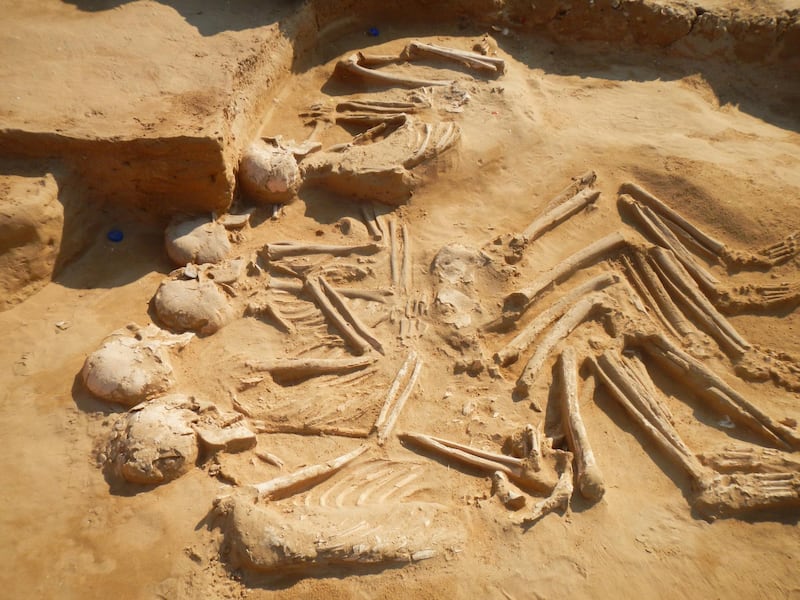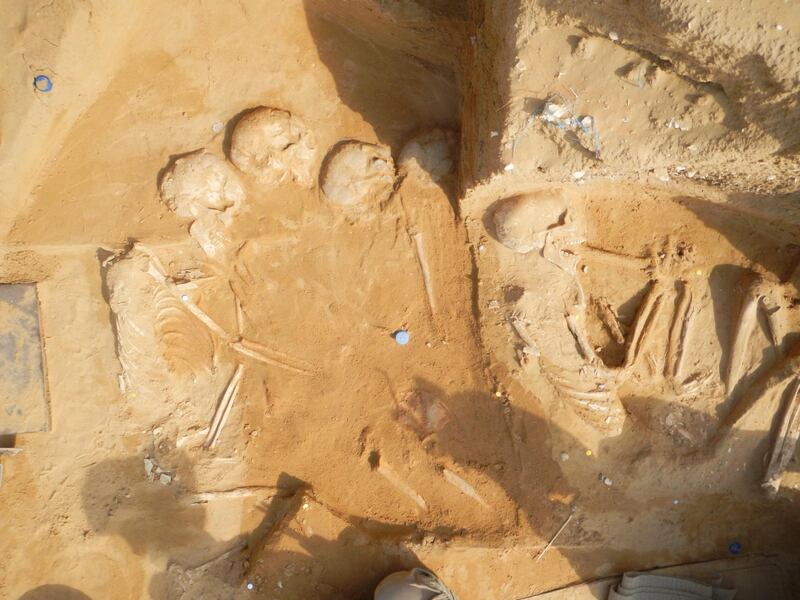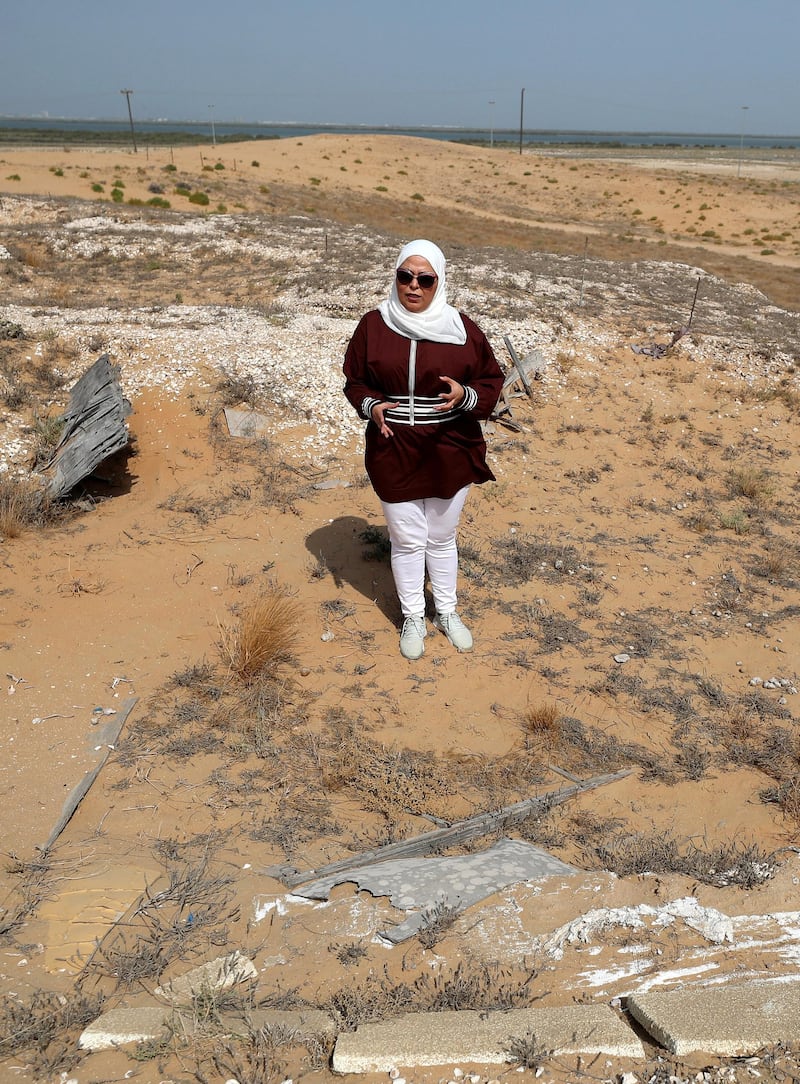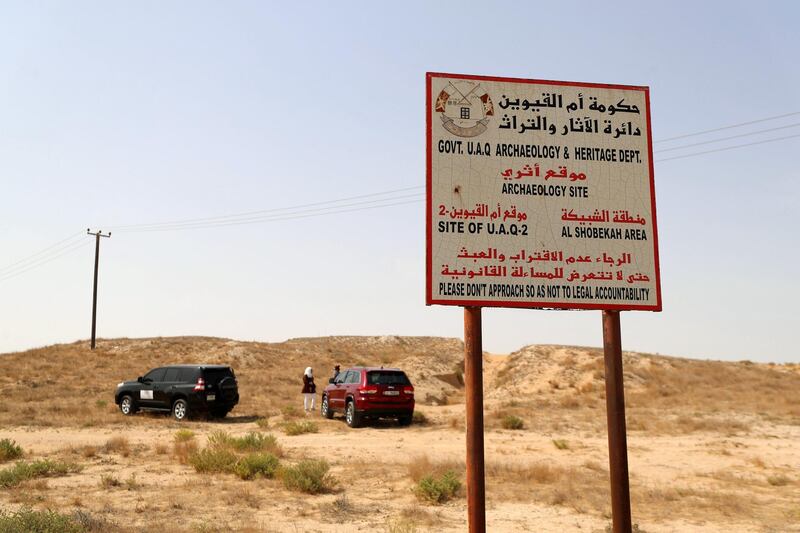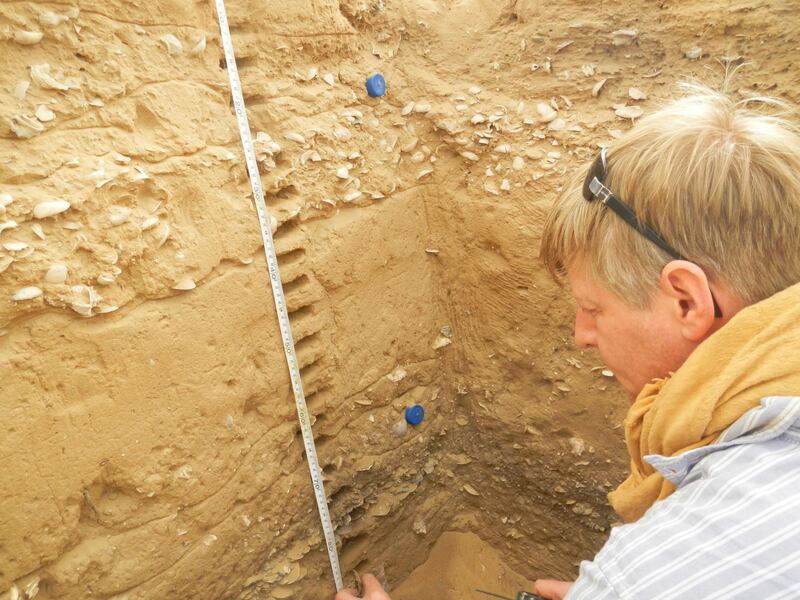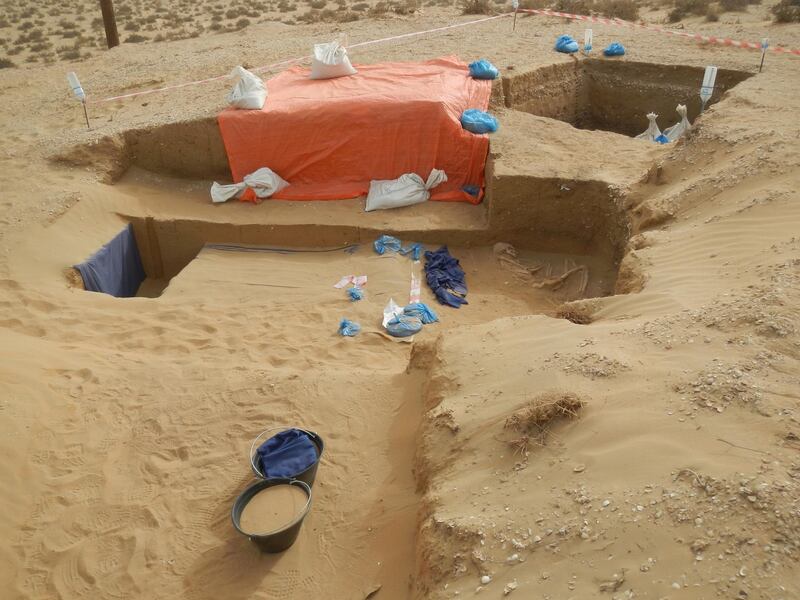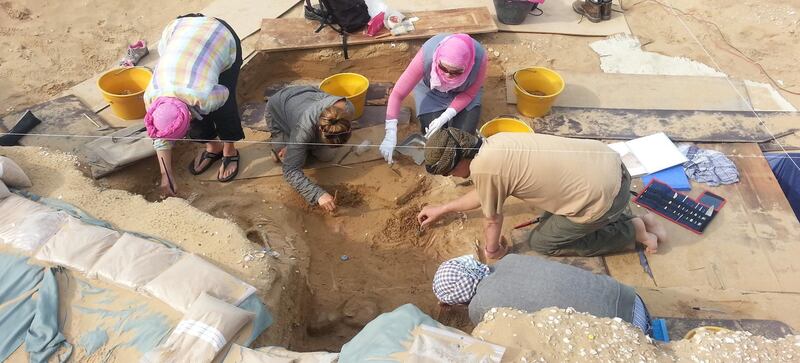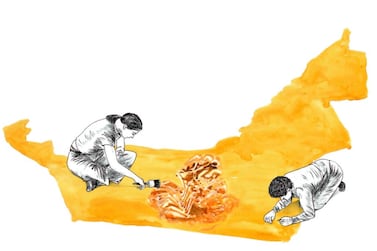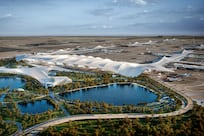More than quarter of a century after the discovery of a Neolithic cemetery in the UAE, archaeologists and historians continue to study the life and times of the people who were perhaps the first inhabitants of this land.
The mass grave, discovered at Al Shabika in 1992 by Carl Philips and his team, offers a window on the rich history of the UAE, where pearl fishing and tribal life was the norm.
Mr Philips led the British mission which unearthed 42 skeletons in shallow graves.
Analysis of the remains suggested the people could have lived around the Umm Al Quwain Lake about 7,500 years ago.
Archaeologists call this the Neolithic period, or the final division of the Stone Age.
“The ancient cemetery dates back to the middle of the sixth millennium BC and belongs to the Neolithic period, which showed the development of fishing, pearling and the reliance on marine resources during that time,” said Rania Kannouma, head of the archaeology department at UAQ Department of Tourism and Archaeology.
Further discoveries in the same area pointed to the conclusion that the land was inhabited by humans during that time.
In 2013, five skeletons were unearthed from beneath the dig site worked by Mr Philips and his team.
This evidence helped archaeologists to understand the life of the early inhabitants and their funeral rituals.
“We joined the French mission headed by Dr Sophie Marie after deciding to reopen the site in 2011, and between 2012 and 2013, another grave and a human settlement were unearthed,” said Ms Kannouma.
The bodies were placed close to each other on their left sides in one pit.
Their arms were right folded and placed on the skeleton next to them, while their legs were bent and tangled in some cases.
Skeletal analysis and forensic examinations showed that the remains were of men in their early 20s.
One had an arrow wound, suggesting that his death may have been as a result of conflict between tribes.
“The men were pearl fishers, and one of the hypothesis is that they likely died during a conflict with another group, but these are assumptions and it is hard to confirm the exact cause of death except for one skeleton who was found with an arrow in his ribcage,” said Ms Kannouma.
“The arrangement of the bodies introduce the idea that they might be buried by their own community and might be related to each other.
What we know about UAE life 7,500 years ago
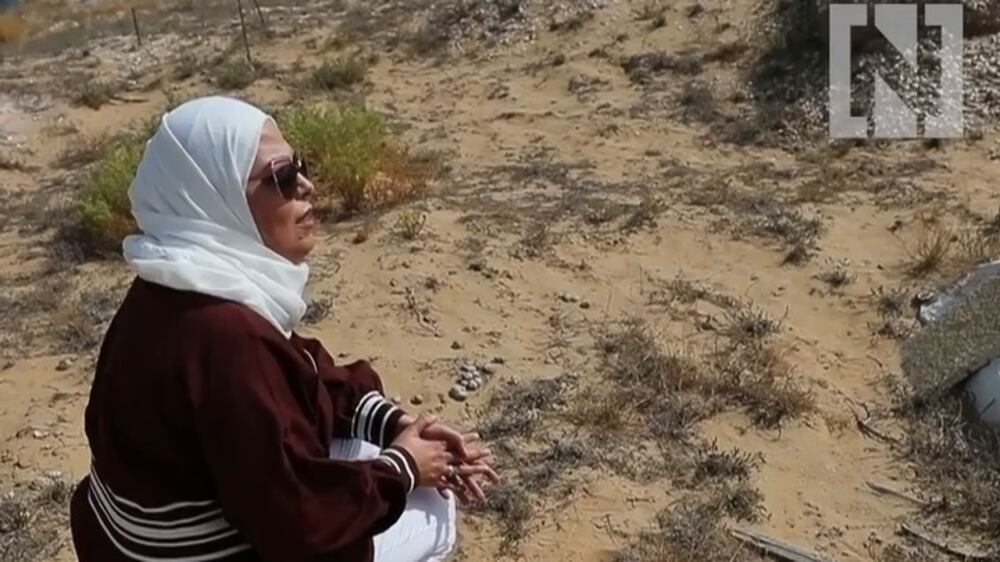
“Pearls were found next to some of the skeletons which provide evidence of pearling in that period and shows the symbolic value of pearls in the burial ritual.”
Archaeologists also found burnt animal bones in the settlement, aiding the hypothesis that the tribes gathered during burials and funeral meals.
The site was covered with seashells which, according to Ms Kannouma, helped keep the skeletons in good condition.
“The existence of shells increased the level of salinity in the soil which helped preserving the skeletons until they were discovered,” she said.
“Some of the bones were kept for further studies while the rest have been reburied in the same area they were found in.”
Antique pottery, psoriatic beads, weighted fishing nets and grinding stones were also found in the settlement
“We also found one of the oldest natural pearls in the world dating back to 7,500 years in the site,” she said.
“Some of the findings are on display at Falaj Mualla Museum.”
The emirate's Department of Tourism and Archaeology posted a picture of the five interlocking skeletons on its Instagram account.
“We intend to share photos and information about the emirate’s unique discoveries on social media regularly to educate the public and highlight Umm Al Quwain’s rich history,” said Ms Kannouma.
There are five archaeological sites in Umm Al Quwain: Tel Abraq, Alokaaab Island, Al Shabika site, the Ed-Dur site, and Siniya Island, along with three museums – Al Ali Fort, Falaj Mualla Museum, and Umm Al Quwain Centre Of Antiquities.
The department is working on restoring the house of Shiekh Saeed Al Mualla, one of the most important historical buildings in the emirate.
"In addition, developing works at Ed-Dur archaeological site are ongoing to prepare it to welcome visitors soon, as well as the continuation of excavation work in many archaeological sites to enhance the cultural heritage in the emirate," said Ms Kannouma.
